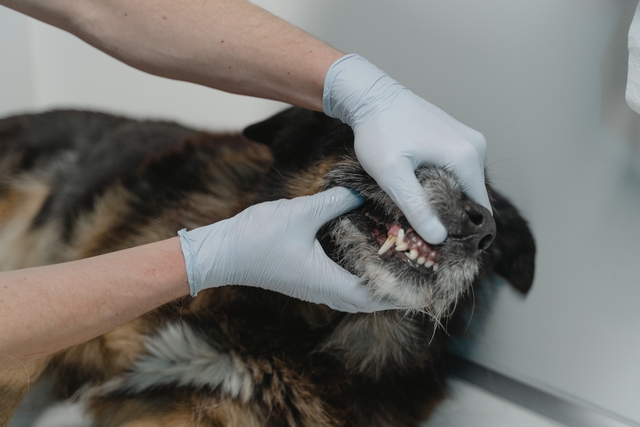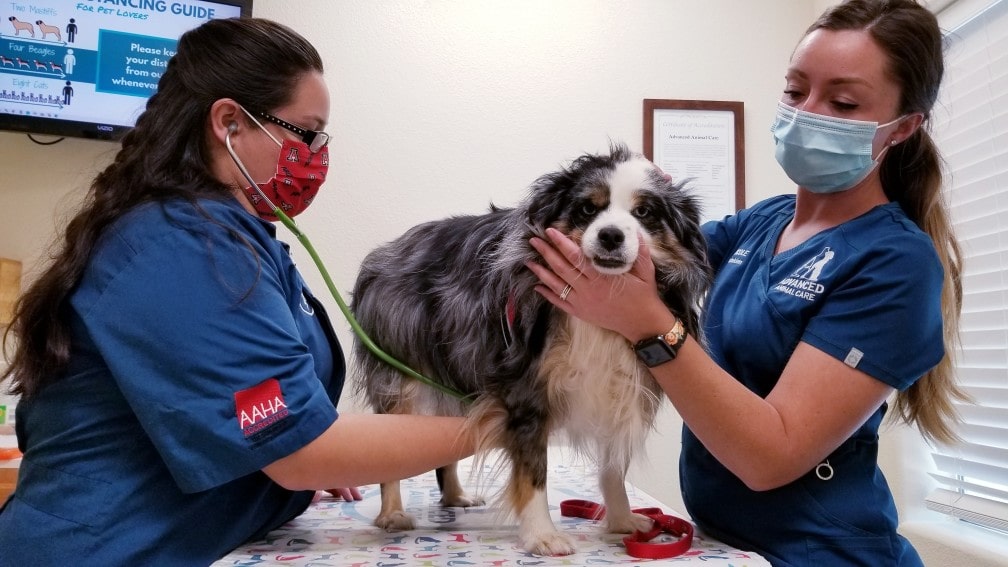No, you don’t have to remove broken teeth. According to K9 Rocks, veterinarians can perform Root Canal Therapy which has a success rate of 95%. Or you can do Vital Pulpotomy which has a success rate of 75%.
Sometimes, pets get hit by cars and this can cause them to break their teeth. Some dogs broken teeth will heal on their own and not need to be removed while others may require surgery to stay in place. When the fracture site is very near a nerve or the pulp of a tooth, removal might also be necessary.
In these cases, your veterinarian must have a wide range of tools available so they can create a safe environment for your pet while they remove the tooth.
How to Know If Your Dog Has Broken Teeth?
You may notice that your dog has a missing tooth, or you may see a chunk of the tooth is missing. This is called a slab fracture. It’s an injury to the tooth caused by blunt force trauma to the mouth. A more common issue we see in dogs as simple as this one is due to chewing on objects, like bones, rawhides, and other toys.
Tooth fractures are a common dog emergency. The dogs who have had significant trauma to their mouth, including a traumatic injury that may have involved the teeth, might show obvious signs of blood or swell in the mouth and around the teeth. When they try to chew, they might vocalize pain.
Are Broken Teeth Painful for Your Dog?
One of the most important aspects to care for is their oral health. Unfortunately, dogs don’t always show obvious signs when they have a tooth that has been knocked out or worse, broken in half.
Dogs with small breaks in their teeth or shallow tooth damage will most likely not be in pain. But if your dog’s tooth is infected or its pulp cavity is exposed the pain could be intense.
Toys that Can Break or Damage Your Dog Teeth
- Bones
- Antlers
- Tennis Balls
- Cow Hooves
- Ice Cubes
- Sticks
- Nylon Chew Toys
Treatment Options for a Broken Dog Teeth
It is important to go to the vet when your canine friend has a broken tooth. They will examine your dog and recommend dental treatments based on the severity of the injury.
Even when a pet has a broken tooth, their history will be obtained. It includes their medical history and how the fracture happened. The pet’s vitals will also be assessed before a mouth exam is conducted.
When a dog is brought in for dental problems, the primary goal is to save its tooth and function. The pooch would undergo three different procedures: to either extract its tooth, repair it or remove its tooth altogether.
-
Root Canal Therapy
To determine the best solution for your pet’s dental issue, a vet checks the teeth and chooses the best option based on their evaluation. One of the options is a root canal (a procedure that removes and replaces tissues from a tooth’s pulp cavity). What makes this procedure different from other treatments is that a sealant is placed over the tooth to prevent bacteria from entering.
Your four-legged friend will be put under general anesthesia for root canal therapy. Your vet is there for questions and concerns about the risks and effects of anesthesia.
Your vet may suggest placing a crown as a precaution if the tooth’s fracture risk is high. This option would be discussed along with the main procedure and require a second visit to the vet. Placement of a crown would usually take another session with general anesthesia because it goes over the tooth after root canal therapy.
Root canal therapy is often a successful procedure and will help your pup to be back to normal after one day. One year following the procedure, your vet may schedule an appointment to do follow-up dental x-rays.
-
Vital Pulpotomy
Puppies often need to have a vital pulpotomy instead of a root canal because their teeth are still developing (under 18 months of age) and not fully formed. A vital pulpotomy is a treatment option aimed at tooth function to allow it to develop fully and become stronger.
Fluids and bacteria can cause an infection in the pulpal tissue. To combat this, fluids get removed from the part of the pulp that is infected. Then a sterile dressing should be put on to promote healing. Dental composite is then placed on top of the medicated dressing and serves as a protective barrier for the exposed pulp.
To detect complications quickly, it is essential to have follow-up dental x-rays, which ensures that the tooth extraction procedure was a success and the tooth growth is as expected
Note: Teeth that have undergone vital pulpotomy will need a root canal in the future.
-
Tooth Extraction
Tooth extractions are usually the last resort for fractured teeth to prevent infection. This extraction opportunity becomes more common if oral x-rays show signs of broken roots or tooth resorption, and the root canal procedure is deemed not successful.
The extraction of a tooth takes less time than the treatment of a root canal or vital pulpotomy. If a tooth is extracted, then it will be completely removed while root canals and vital pulpotomies only treat part of the tooth.
To prevent your pet from being in pain, they will have to be on soft foods for at least two weeks after extraction. But dogs that underwent root canal or vital pulpotomy can immediately return to eating kibble after any of these procedures.
Remember, you don’t need to take monthly dental x-rays for your pet, but you should go for dental check-ups regularly to keep them healthy.
Conclusion
While broken dog teeth may not always need to be removed, it is vital to seek professional veterinary care if your canine friend’s tooth is fractured. A vet will be able to properly assess the situation and recommend the best course of treatment.
In some cases, a broken tooth can be saved with a root canal or other procedure, but in other cases, extraction may be necessary. Regardless of what your vet recommends, it is important to follow their advice to ensure that your dog remains healthy and happy.

 DogExpress
DogExpress


















 in Chandigarh, India.
in Chandigarh, India. 
